This is the Blog created to share, Discuss everything related to hardware and software of a computer machine including news and upcoming Features.
Monday, 7 October 2013
Thursday, 3 October 2013
Bad Secrets About Apple (which they don't want to mention)
The Nature of the Beast
You do not become the most powerful electronics company in the world without doing some dirty work. You can not have $150 billion in cash without cutting some corners. It is hard to keep your prices reasonable without exploiting people.
They Exploit Cheap Labor in China
For optimal profit margin Apple must produce the iPhones for cheap. Since Apple only uses top quality electronic parts, the difference is made up in cheap labor. The NYT reports that workers at Foxconn, the former manufacturer of the iPhone, make $22 for a twelve hour shift, and are often forced to work even longer hours. There were so many suicides in the on-site dorms where the workers live that Foxconn had to install nets on the sides of the buildings.
They Pollute Horrendously
In 2011 Apple was responsible for putting 23.1 metric tons of greenhouse gas emissions into the atmosphere. And while Apple says they are working diligently to decrease their carbon footprint, their emissions rose 34% in 2012.
They Sell iPhones WAY Above Cost
IHS Inc. reports that an iPhone costs $207 to manufacture. They sell them to wireless carriers for around $580. The number varies by model, but overall Apple usually sells at a 49-58% markup, while the industry average is closer to 30%.
They Screw Over Wireless Carriers, Who Then Screw You Over
Wireless carriers know they can either offer their customers the iPhone, or see them leave for a company that does. Apple knows this too, so they force the carriers to sell the iPhone for $200 after selling it to them for $580 (a $380 loss). The providers are forced to make up the difference by raising rates on your text, calling and data. Verizon recently eliminated unlimited data and charges heavily for overages, and AT&T increased data prices by $5 per month.
They Have not Really Innovated in Years
In 2007 Apple released the revolutionary iPhone. It’s been six years and it’s the same except thinner, faster, and with a better camera. Oh the iPad? It’s not new. The iPad was what an engineer originally brought to Steve Jobs, who told him to make it smaller and give it phone capabilities.
They Use Conflict Minerals in Their Products
The iPhone and other Apple products have the conflict mineral Coltan in them. Coltan is heat resistant, and ideal for transmitting electric charges. This mineral is rare, expensive (a mine can be worth hundreds of millions of US dollars), and prevalent in war torn Congo. Since 1998, 5-7 million people have died in an ongoing civil war being fought, largely, over control of the mines. The mineral can be found in most electronics company’s products, but Apple is the world’s biggest and should start the trend of boycotting conflict minerals.
They Do not Let You Turn off Your Phone
Even when an iPhone is “dead” it’s still traceable, which is why Find My iPhone works no matter what. Also, even when not on data or Wifi, satellites can pinpoint your iPhone's location. On top of that, the new M7 chip makes tracking your exact movements and speed possible. But you can always just take out the battery. Oh that’s right, no you can not.
They Do not Play Well With Others
Apple did away with the pre-installed YouTube app, started their own maps to combat Google’s, and demanded Amazon pay a percentage of all sales through its app. The only one they hurt was you. Apple Maps is a disaster, you now have to go onto Amazon’s website to buy stuff, and download the Google Maps and YouTube apps separate (they are among the most successful apps, anyways).
They Rip You Off on Accessories
There is not information on the markup Apple applies to their $40-$50 cases, but similar ones can be found on eBay for $5-$10. They pedaled different speakers, alarm clocks, cords etc., then changed the plug shape and now charge $29 for a converter so you can keep using the products you bought.

Configuring a Router in Cisco Packet Tracer (Quick method)
Basic Router Configuration
Objectives:
This Lab includes procedures for configuring the basic parameters of your Cisco router, including global parameter settings, interfaces, and command-line access.
Overview:
Router is a device that forwards data packets along networks. A router is connected to at least two networks, commonly two LANs or WANs or a LAN and its ISP's network. Routers are located at gateways, the places where two or more networks connect, and are the critical device that keeps data flowing between networks and keeps the networks connected to the Internet.
Lab Instructions:
Viewing Basic Router Information
Step#1:
Open the Packet Tracer and Press Control+Alt+R and then select a Router; In this case we have selected 1841 Cisco Router.
Step#2:
Click on the Router Icon and then select the CLI for configuring it. The following interface will appear,
Type no and then press enter. Again press Enter and now you are in user mode, you will see that a prompt appears here.
Router>
Configure Global Parameters
Step#1:
Open the Packet Tracer Select the Same Router and get into user mode.
Step#1:
When the User mode prompt appears perform these steps to configure selected global parameters for your router:
Set a console password to Cisco
Router(config)#line con 0 Router(config-line)#login Router(config-line)#password cisco
Router (config)#line con 0
Router (config-line)#logging synchronous
Turns on synchronous logging. Information items sent to console will not interrupt the command you are typing. The command will be moved to a new line
Router(config-line)#exec-timeout 0 0
Sets time limit when console automatically logs off. Set to 0 0 (minutes seconds) means console never logs off.
Connecting two different Networks via a Router
Step#1
Router(config)#interface fastEthernet 0/0
Router(config-if)#ip address 192.168.1.100 255.255.255.0
Router(config-if)#no shut down
%LINK-5-CHANGED: Interface FastEthernet0/0, changed state to up
Router(config)#interface fastEthernet 0/1
Router(config-if)#ip address 192.168.2.100 255.255.255.0
Router(config-if)#no shut down
%LINK-5-CHANGED: Interface FastEthernet0/1, changed state to up
Step#2
Assign an ip address to pc0 in the same subnet given to the interface of the router.
And ping the ip address of the router interface for checking connectivity.
For remote login:
Type the following configuration commands on the router:
Router(config)#line vty 0 4
Router(config-line)#password cisco
Router(config-line)#login
Objectives:
This Lab includes procedures for configuring the basic parameters of your Cisco router, including global parameter settings, interfaces, and command-line access.
Overview:
Router is a device that forwards data packets along networks. A router is connected to at least two networks, commonly two LANs or WANs or a LAN and its ISP's network. Routers are located at gateways, the places where two or more networks connect, and are the critical device that keeps data flowing between networks and keeps the networks connected to the Internet.
Lab Instructions:
Viewing Basic Router Information
Step#1:
Open the Packet Tracer and Press Control+Alt+R and then select a Router; In this case we have selected 1841 Cisco Router.
Step#2:
Click on the Router Icon and then select the CLI for configuring it. The following interface will appear,
Type no and then press enter. Again press Enter and now you are in user mode, you will see that a prompt appears here.
Router>
Configure Global Parameters
Step#1:
Open the Packet Tracer Select the Same Router and get into user mode.
Step#1:
When the User mode prompt appears perform these steps to configure selected global parameters for your router:
Set a console password to Cisco
Router(config)#line con 0 Router(config-line)#login Router(config-line)#password cisco
Router (config)#line con 0
Router (config-line)#logging synchronous
Turns on synchronous logging. Information items sent to console will not interrupt the command you are typing. The command will be moved to a new line
Router(config-line)#exec-timeout 0 0
Sets time limit when console automatically logs off. Set to 0 0 (minutes seconds) means console never logs off.
Connecting two different Networks via a Router
Step#1
Router(config)#interface fastEthernet 0/0
Router(config-if)#ip address 192.168.1.100 255.255.255.0
Router(config-if)#no shut down
%LINK-5-CHANGED: Interface FastEthernet0/0, changed state to up
Router(config)#interface fastEthernet 0/1
Router(config-if)#ip address 192.168.2.100 255.255.255.0
Router(config-if)#no shut down
%LINK-5-CHANGED: Interface FastEthernet0/1, changed state to up
Step#2
Assign an ip address to pc0 in the same subnet given to the interface of the router.
And ping the ip address of the router interface for checking connectivity.
For remote login:
Type the following configuration commands on the router:
Router(config)#line vty 0 4
Router(config-line)#password cisco
Router(config-line)#login
Sunday, 29 September 2013
Qmobile Noir Quatro Z4
Qmobile
Noir Quatro Z4 Price in Pakistan and Specifications
Qmobile Noir Quatro Z4 Price in Pakistan: Rs. 36,500
Qmobile Noir Quatro Z4 Price: USD $325
Qmobile Noir Quatro Z4 Specifications Pros and Cons:
Operating Frequency: GSM:
850 / 900 / 1800 / 1900, TD-SCDMA 1900/2100 MHz
Dimension: -
Device type: Smart
Phone
Form: Candy Bar
Weight: -
Display: 5.0
inches, 1080 x 1920 pixels, IPS HD Touchscreen, 16.7M colors, Multi-touch,
Super AMOLED Plus capacitive touchscreen
Operating System: Android
4.2 Jelly Bean
Processor:
1.5GHz Quad Core MediaTek MT6589T, GPU: PowerVR Series5XT
Memory: 16GB
built-in, 2GB RAM
Card Slot: No
Camera: 13MP
LED flash, auto focus, Geo-tagging, face tracking, HDR, continuous shooting,
touchscreen shooting, gesture, Beauty effects, smile & more, Video 1080p,
(30fps) with Gyroscopic Stabilization, Front Camera 5MP
Colors: Yellow, Black
and White
Sensors: Gyro,
Accelerometer, proximity, Light Sensor, Compass
Browser: HTML5
Battery: 2000
mAh
Connectivity: Bluetooth
4.0, USB, WLAN (Wi-Fi 802.11 b/g/e), GPRS, EDGE, GPS + A-GPS support
Entertainment: FM
radio, 3.5mm audio jack,
MP4/H.263/H.264/WMV, MP3/eAAC+/WMA/WAV player,Viber, Whatsapp, Facebook,
Games, Viber, WhatsAPP, Skype
Other Features: DTS
3D Surround Sound, Light Sensor, Face Unlock, OTA
Officially Announced: October,
2013
PROS:
o Fast data network
o Fast processor
o Very large RAM
o Large display
o High resolution
display (Full HD 1080p)
o High pixel
density screen
o High resolution
camera
o High definition
video capture
CONS:
o No microSD card
slot for storage expansion
Incoming search terms:
o qmobile quatro z4
o Qmobile Noir Quatro Z4
o qmobile z4 specs
o noir quatro z4
o noir z4
o q mobile noir a34
skype video call
o q mobile noir
quatro z4
o qmobile a10 quad
core review
o z4 price qmobile
Sunday, 22 September 2013
Something to share RELATED TO SEO!!!
It’s been a few months since we carried out a smaller piece of research, based on a group of 100 sites. Just to recap, here is a quick rundown of the first study:
- 100 sample sites, selected at random
- Details on 50,000 backlinks per site imported and analyzed from each provider
- ahrefs vs Majestic SEO (Fresh Index) vs MOZ
- In total, we analyzed 4,010,432 links
- Conclusion: Majestic had the most links, whilst MOZ had the highest ratio of actual live links in its index
That was a very small sample of this research and gave us some insights into what we might expect when we analyzed bigger volumes of links. Whereas in the previous research we looked at 100 sites, with this second study, we we're going to be looking at 1,000 sites and potentially tens of millions of links. I'll give you all an idea of the kind of data processing that this might involve:
- Taking 1,000 random sites
- Importing up to 50,000 backlinks max. per site
- From 3 link data providers
- That's a total of 150,000,000 links to analyze (potentially)!
- Recrawling every link (live, dead, redirect, etc)
- Checking each link against Google's index
- At least 450,000,000 different queries!!!
7 Ways To Transfer Files Wirelessly To Your Android Device
So, here are some of the ways of wireless file transfer:
Software Data Cable
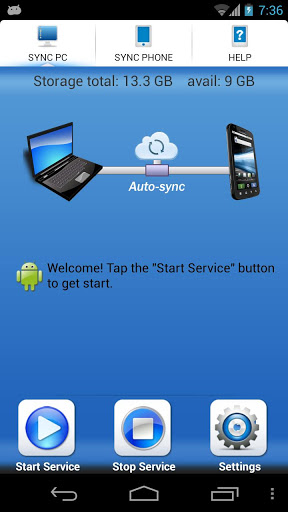
Dropbox
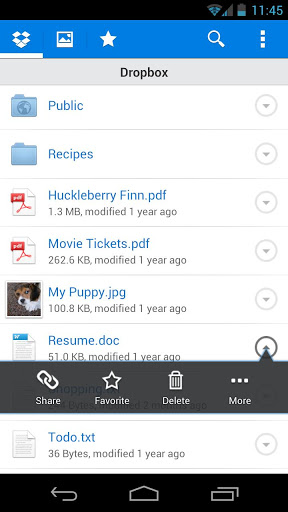
ES File Explorer
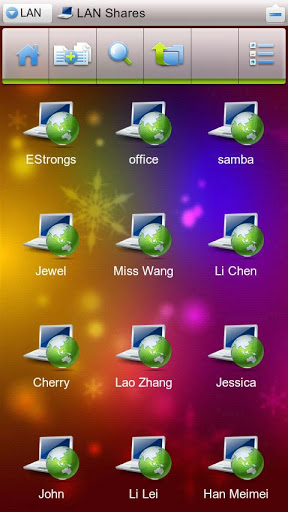
Fast File Transfer
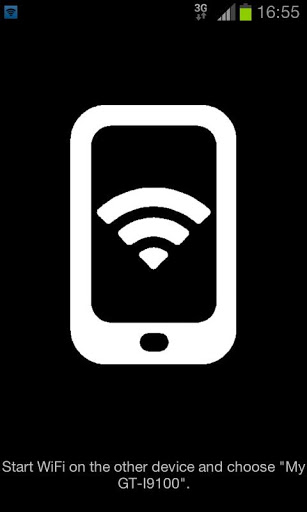
WiFi File Explorer
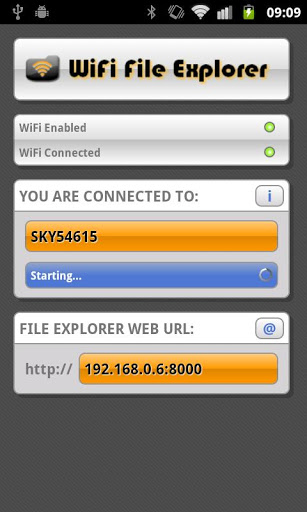
iShare

File Expert
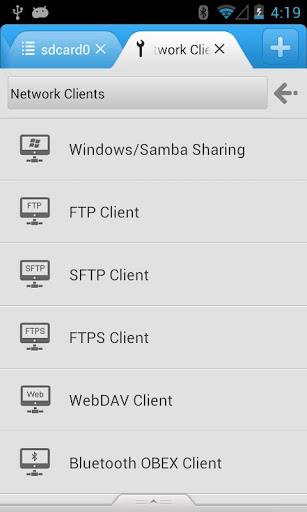
REFERENCE IS: http://www.techsoulz.com/2013/09/7-ways-to-transfer-files-wirelessly-to.html
Saturday, 21 September 2013
12 Things and New Settings You Must Know About iOS 7 ~ TechSoulz
Dynamic Type
One new feature of iOS 7 which I immediately wanted to test was 'Dynamic Type'. Available from iOS 7's Settings App > General > Text Size, this one allows you to control the relative text size across any apps that support it. What Dynamic Text means is that if you prefer text bigger or smaller in general, you need only set it once and your apps will instantly adopt your settings, system-wide.
2. Frequent Locations
Buried inside Settings > Privacy > Location Services > System Services is a new option labeled 'Frequent Locations', a feature that allows your iPhone/iPod to remember where you have been. Go here and you will see something that might make you shiver with Big Brother-y chills, or it might make you think, "hey, that's cool. I wonder what benefit that will provide me down the road?"
Either way, it is good to know, so we tell you. There are settings to fit both classes of mentioned users.
Either way, it is good to know, so we tell you. There are settings to fit both classes of mentioned users.
3. Dynamic Wallpaper
Apple likes to bake in subtle changes with the potential for them to grow into larger features, and I believe they have done so with what they are calling 'Dynamic Wallpaper'. iOS 7 features seven different-colored themes on a background of floating bubbles. The colors, not surprisingly, match the green, yellow, blue and red of the iPhone 5c, plus some grey shades and one purple/blue color mashup. I am not convinced these set of wallpapers look all that great, but the concept is intriguing. Will developers be able to design their own animated wallpaper down the road? This will be one to watch.
4. Better Do Not Disturb Settings
If you have ever had iOS's Do Not Disturb set only to have an iMessage chime just because your phone was awake while you checked email, fret no more. You can now configure whether DnD works only when the device is locked or all the time. Yet another example of a minor, incremental change that will make a huge difference for some of us.
5. Blocked Callers
Answering calls from users to block calls and texts from spammers, Apple has finally added a global blocklist into iOS. Accessible in the Phone, Messages, and Facetime sections of the Settings app, iOS 7's new 'Blocked' list does just what it says ensures that you won't be notified of any calls or texts from anyone listed here.
The rub is that if you want to block a number (or email address, for Facetime calls) that hasn't called you yet, you must first associate it with a contact. That is easy if it's an ex-liontamer that you no longer wish to work with but previously had in your Contacts, but gets a little trickier if it is some random spammer.
The rub is that if you want to block a number (or email address, for Facetime calls) that hasn't called you yet, you must first associate it with a contact. That is easy if it's an ex-liontamer that you no longer wish to work with but previously had in your Contacts, but gets a little trickier if it is some random spammer.
Numbers that have called you, though, can be blocked directly from the 'Recents' list in the Phone app. Just click the circled 'I', scroll down, and select 'Block this Caller'.
6. Multiple 'From' Address Management
Like you can on the Mac, iOS has long allowed you to set multiple 'From' addresses for IMAP and POP accounts in Mail. But it is never worked well, and never really felt officially supported. It required a comma to make it work and when typing in the appropriate field, the keyboard would have no comma available! Still, it's always worked, and a lot of us rely on it. Good news for all of us is that in iOS 7 this feature is made official and gets first-class-citizen treatment in the UI.
Simply visit Settings > Mail, Contacts, Calendars > (your iCloud, POP or IMAP account) and navigate to the screen with the 'Email' field on it by tapping again into your account. When you tap on the 'Email' field, you are now shown a list that allows you to edit, re-arrange, and even highlight a single address to be used by default.
7. Explicit Computer Trust
This is not a setting you will need to find, It will find you. The first time you connect your iOS 7 device to a computer the device itself will confirm that you wish to share your settings and data with the new computer. This trust was implicit in the past, but these days Apple seems to agree that we shall never presume a trust relationship. That is a good thing.
8. Background App Refresh
One of the newly-touted features of iOS 7 is the ability for apps to work together with the OS on coalescing their updates. This is a great thing and should vastly improve network efficiency as well as battery life. Still, there may be some apps which request to have a 'Network pit stop' a little too often, and Apple gives you, the user, the ability to disable them on an app-by-app basis. Navigate to Settings > General > Background App Refresh to manage at will.
9. Burst Mode for Photos
iOS 7's camera includes a new 'Burst Mode' wherein you simply hold down the shutter button and your iPhone will take multiple pictures in rapid succession until you let off the shutter. This can be quite handy for catching just the right shot. However, for those of you that had learned to stabilize your camera by holding down the shutter button instead of tapping it, this can result in a lot of unexpected pictures. This feature appears to be enabled full-time whether you want it or not, so we will all need to simply learn to adapt.
10. Take Square Pictures
iOS 7's camera has a whole new interface that will become immediately apparent the first time you launch the camera. One of the new picture modes is the ability to take square pictures regardless of whether you're holding your iPhone in portrait or landscape orientations. This can be handy for several purposes, including future Instagram sharing. To enable this, simply slide the selector available beneath the viewer window.
11. Photo Filters add Mojo
Apple has taken inspiration from many popular photo apps by incorporating live filters right into the camera. As you can see for yourself, Apple's built-in filters provide some subtle effects which you can preview in real-time before you snap your shot.
12. AirDrop
This one's not entirely hidden, but we wanted to share it nonetheless. AirDrop allows you to share data wirelessly with other nearby iPhone users. You enable it by swiping up from the bottom of the screen to activate the Control Center. Once it is on, then you will show up as a destination for other local iPhones and iPads. This does not require you both to be connected to the same Wi-Fi network, but doesn't yet have interoperability with Macs, only other iOS users.
REFERENCE IS: http://www.techsoulz.com/2013
What's in IOs 7 ???
A recent tweet had me in hysterics:
“Daddy, why has your phone gone all funny?” – A 6 year old’s
reaction to the iOS7.
And that’s the new hype on online sites these days – The new
Apple iPhone and iPad software upgrade – the iOS7. There were so many posts and
tweets that I actually got confused because I thought Apple had launched the
iPhone 6 so soon after the launch of iPhone 5c and 5s!
However, after installing the new software and talking to
people who have installed it, I realised that it is a major overhaul by Johnny
Ives, the Senior VP of Design at Apple. And you know what they say about major
changes, don’t you? The response is usually varied, dramatic and extreme. So is
the case with the iOS7.
The positives:
Although functionality has also seen some changes, what has
impressed or angered users the most is the first interaction with the
aesthetics of the new software. Laying my iPhone (before installing the
software) side-by-side with the my husband’s (after installing the software),
was like looking at two different types of phones.
The first thing that jumps out at you is the minimalism
incorporated in the design – the fonts are flatter, the layout is cleaner, the
signal bars have made way for a series of dots and the new palette of colors
just freshenes up the look.
Now, once you’ve gotten over the intial shock of the bare and
modern aesthetics, you will most likely proceed to unlock your phone, looking
for the ‘slide to unlock’ bar on your screen. Not finding it on the screen may
leave you terribly confused. But fear not, in addition to the aesthetics, Apple
has simplified this first function of the iPhone as well. Now you can swipe
anywhere on the screen to unlock the phone. Awesome isn’t it, especially while
driving which is where I would struggle with the touchscreen the most (although
please avoid calls while driving at all costs).
Them we come to multi-tasking and intelligent scheduling: the
key feature of smart phones.
iPhones were already smart allowing you to fade music
out, attend a call, check a picture and send it, return to the call and then go
back to the tune you were enjoying. But with the iOS7 you can now access
the bluetooth and Wifi toggles without having to trawl through settings. Even
better, iOS7 learns when you like to use your apps and can update your content
before you launch them. So, if you generally check a social networking website
every morning at 10:00 am. iOS7 will have it ready and waiting for you!
That, if you ask me, is smart.
Then, of course are the little cherries on the cake –new
wallpapers (including dynamic ones), swiping up to turn the torch and
calculator, message timestaps (pulling your text messages to the left to show
the time you sent/received them) and the jazzy camera options. You can swipe
between shot types, add quick effects and take burst shots, reducing the time
to get ‘that perfect shot’. And I am sure the audio only feature on
facetime will be a welcome option for all those who want to talk but not be
seen!
That said, with a major overhaul there have got to be
negatives, and the iOS 7 has them too.
The negatives:
The iCloud, for one, is still a disappointment to many.
Although it offers free backup, users keep running out of space with more and
more apps and photos and the iCloud offers no good or easily available solution
to fix this. And the camera burst feature further clogs up the cloud since it
allows many shots to be taken in a burst, but the focus speed isn’t quick
enough – ending up with the user storing blurry pictures on the iCloud and
taking up unnecessary space.
Additionally, the software is a major drain on the battery
life, which could be problematic if you tend to use your phone a lot.
All in all, It is different and it will definitely take time
to warm up to, especially because the older version lasted so long.
Still, it’s definitely slicker in usability and faster when switching between
apps and windows.
Like a friend said,
“One thing that amazes me about Apple always is the
user-friendliness and adaptability – I couldn’t get the hang of multi-tasking
and I gave the iPad to my 18 month old daughter and she could almost get them
to work each time! I had to observe her hand movement to figure out what to
do!”
The verdict:
So all in all, upgrading to the iOS7 is probably a good idea
since you’ll be re-acclimitising yourself to some features and it will be a
transition for the next software upgrade. Otherwise, you might be at a loss
when the next software hits the market. Having said as much, the upgrade is
recommended more for the iPhone 4S and the 5 and not so much for the iPhone 4.
A small piece, though, of advice – keep your expectations to
the ground and you’ll be a satisfied iPhone user.
Small Solution or Small part of Splitting Array! C Sharp
So this is Something Related to the Post "Array Splitter" It is not yet completed but i just figure out few things like this one! A small portion of this problem has been done so far using C SHARP Can you guys suggest me something better or something good for the this Problem? WE are getting inputs from user and the size of array as well from User. Hope you like it! WE have to Finally do this thing at the end!
using System;
using System.Collections.Generic;
using System.Linq;
using System.Text;
namespace Testarray
{
class Program
{
static void Main(string[] args)
{
int size = 0;
Console.WriteLine("Please enter the size of array ");
size=int.Parse(Console.ReadLine());
int size1 = size;
Console.WriteLine("Size= " +size);
int []arr= new int[size];
int mid = (size / 2);
int mid2 = (size / 2);
Console.WriteLine("Now Please enter elements");
for (int i = 0; i < size;i++ )
{
arr[i]=int.Parse(Console.ReadLine());
}
for (int j = 0; j < size +4;j++ )
{
int[] subarr1 = new int[size / 2];
int[] subarr2 = new int[size / 2];
Array.Copy(arr, 0, subarr1, 0, mid);
Console.WriteLine("mid = " + mid);
Console.WriteLine("size = " + size);
Array.Copy(arr, mid, subarr2, 0, mid);
Console.Write("-----------------------");
Console.Write(Environment.NewLine);
Console.Write("Array: ");
for (int i = 0; i < size; i++)
{
Console.Write(arr[i] + " , ");
}
Console.Write(Environment.NewLine);
Console.Write("Left: ");
for (int i = 0; i < subarr1.Length; i++)
{
Console.Write(subarr1[i] + " , ");
}
Console.Write(Environment.NewLine);
Console.Write("Right: ");
for (int i = 0; i < subarr2.Length; i++)
{
Console.Write(subarr2[i] + " , ");
}
Console.Write(Environment.NewLine);
Console.Write("-----------------------");
size = size / 2;
mid = mid / 2;
}
}
}
}
using System;
using System.Collections.Generic;
using System.Linq;
using System.Text;
namespace Testarray
{
class Program
{
static void Main(string[] args)
{
int size = 0;
Console.WriteLine("Please enter the size of array ");
size=int.Parse(Console.ReadLine());
int size1 = size;
Console.WriteLine("Size= " +size);
int []arr= new int[size];
int mid = (size / 2);
int mid2 = (size / 2);
Console.WriteLine("Now Please enter elements");
for (int i = 0; i < size;i++ )
{
arr[i]=int.Parse(Console.ReadLine());
}
for (int j = 0; j < size +4;j++ )
{
int[] subarr1 = new int[size / 2];
int[] subarr2 = new int[size / 2];
Array.Copy(arr, 0, subarr1, 0, mid);
Console.WriteLine("mid = " + mid);
Console.WriteLine("size = " + size);
Array.Copy(arr, mid, subarr2, 0, mid);
Console.Write("-----------------------");
Console.Write(Environment.NewLine);
Console.Write("Array: ");
for (int i = 0; i < size; i++)
{
Console.Write(arr[i] + " , ");
}
Console.Write(Environment.NewLine);
Console.Write("Left: ");
for (int i = 0; i < subarr1.Length; i++)
{
Console.Write(subarr1[i] + " , ");
}
Console.Write(Environment.NewLine);
Console.Write("Right: ");
for (int i = 0; i < subarr2.Length; i++)
{
Console.Write(subarr2[i] + " , ");
}
Console.Write(Environment.NewLine);
Console.Write("-----------------------");
size = size / 2;
mid = mid / 2;
}
}
}
}
Wednesday, 18 September 2013
Some Concepts regarding Search Engine Optimization (SEO)
What actually is Search Engine optimization as from my perspective is, it is basically the way, the art, the procedure and topology followed to dodge the strong algorithm and crawlers of Google such as Penguin and panda updates! The Things which are the keys for SEO are
And what is our way to get the things right!! These are the Very common aspects which every beginner SEo should kept it into his mind!
Further More My OPINION about SEO and to rank the website right on first page is to do as much good Blog Posts as you can without spamming or getting under crawlers Eyes. Also Social Book Marking Could be a Best Way!
Tuesday, 17 September 2013
Beginners Programming Concepts and Analysis Using Csharp (C#)
I am going to explain a small piece of Problem regarding any Programming language, from me i am using C sharp commonly known As C# and using a console based output! C sharp is pretty interesting and easy to use! Code will be provided soon! If any suggestions and comment you can please tell me i much appreciate it!
Note: This is the problem for beginners we will use iterative method not Recursive! and will find out the complexity!
The Problem: In merge sort we need to divide the input integer array into equal parts recursively till we
reach to the base case (only one item left in splitted arrays). You need to implement the same behavior
but without recursive calls. Your program should get size of array as an input from the user (assume
the array size will always be power of 2). Then the program should ll the array with random values and
split the array till you reach the base case. There is no language and data type restrictions. Your program
should print an output as follows:
Array: 2,3,4,5,6,0,3,1
Left: 2,3,4,5
Right: 6,0,3,1
------------------
Array: 2,3,4,5
Left: 2,3
Right: 4,5
------------------
Array: 6,0,3,1
Left: 6,0
Right: 3,1
------------------
Array: 2, 3
Left: 2
Right: 4
------------------
Array: 4,5
Left: 4
Right: 5
------------------
Array: 6,0
Left: 6
Right: 0
------------------
Array: 3,1
Left: 3
Right: 1
------------------
Note: This is the problem for beginners we will use iterative method not Recursive! and will find out the complexity!
The Problem: In merge sort we need to divide the input integer array into equal parts recursively till we
reach to the base case (only one item left in splitted arrays). You need to implement the same behavior
but without recursive calls. Your program should get size of array as an input from the user (assume
the array size will always be power of 2). Then the program should ll the array with random values and
split the array till you reach the base case. There is no language and data type restrictions. Your program
should print an output as follows:
Array: 2,3,4,5,6,0,3,1
Left: 2,3,4,5
Right: 6,0,3,1
------------------
Array: 2,3,4,5
Left: 2,3
Right: 4,5
------------------
Array: 6,0,3,1
Left: 6,0
Right: 3,1
------------------
Array: 2, 3
Left: 2
Right: 4
------------------
Array: 4,5
Left: 4
Right: 5
------------------
Array: 6,0
Left: 6
Right: 0
------------------
Array: 3,1
Left: 3
Right: 1
------------------
Sunday, 15 September 2013
Static/Dynamic Charges on Computer Hardware could reduce the Life time.
It is observed by some hardware specialists that there is strong effect of charges on the hardware! AS in the experiment it is observed that human body carry charge. While the body is at rest there are less amount of charges in it, but when the body is in movement or in motion there are a good amount of charges that is under consideration these charges can effect the life of hardware.
Taking example of a Ram in the machine while RAM is the Random Access Memory used to propagate data from CPU/ hard disk.
The human body carry charges therefore when a Ram is picked up by humans it is a proper way which should be followed to pick Ram. Mostly hardware oriented people don't just consider this thing but there is a strong impact on that thing! The body carry charge and Ram has the capability to take charges directly from users. When we pick ram from the front and back of it the static charges are being transfer-ed this is why the life time of ram is reduced somehow. Therefore there is a proper way to pick that thing that it from the edges the strong edges where you could not
touch the chips involved. This is all about the charges. In my point of view this is the right way to pick ram to avoid degradation in performance and in its life time. Also we can use the gloves in this regard.
Subscribe to:
Comments (Atom)





















.jpg)